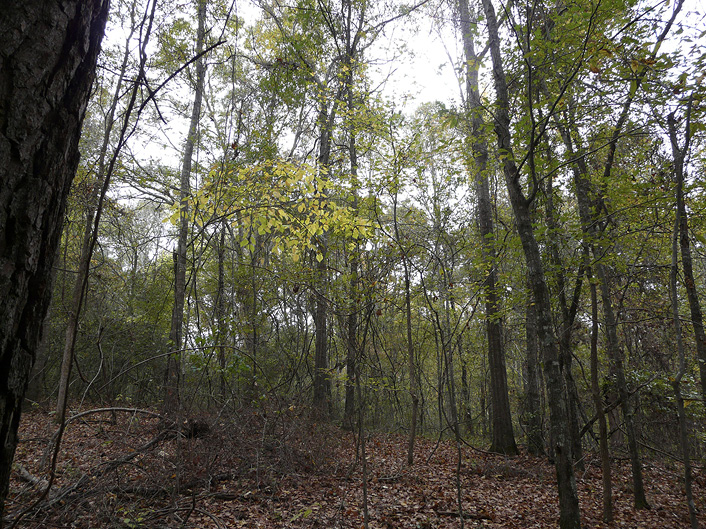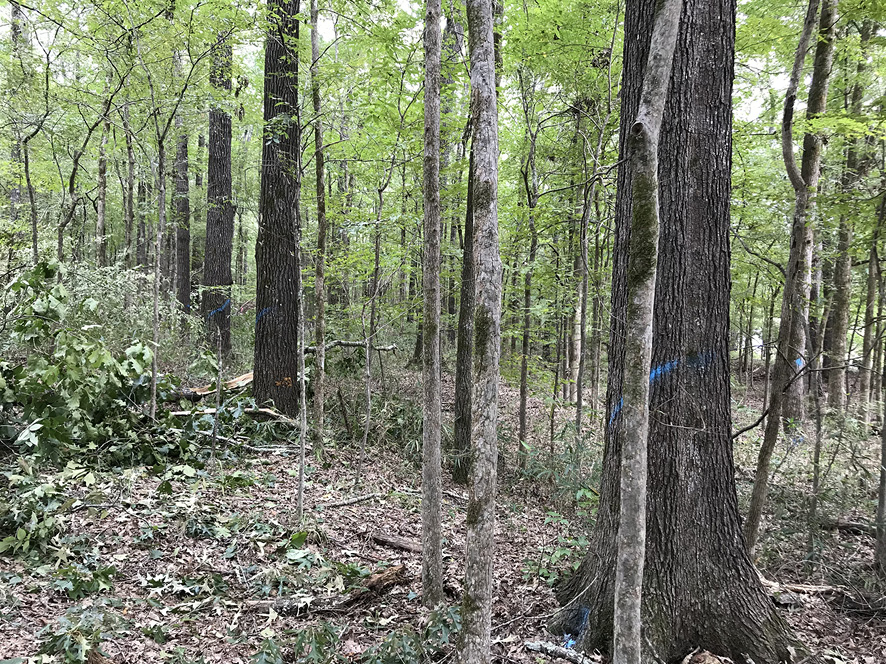Hardwoods: What Is High-Grading?

Several harvesting strategies exist in forest management. While most forest landowners are familiar with terms like clearcut and thinning, many do not realize that several different thinning techniques are in common use. These techniques are designed to enhance residual crop tree growth if applied correctly. They are used to remove stems deemed undesirable for a variety of reasons (e.g., damage, disease, undesirable species, poor form), or to reduce stand density so that residual trees have sufficient room for future growth. While all thinning practices can be detrimental to stand quality if implemented incorrectly, high-grading always results in residual stands of lower quality.
High-grading, known by several names, including selective thinning, select cut, and diameter-limit cutting, can be thought of as a practice that “takes the best and leaves the rest.” Trees with highest value are removed, leaving only inferior trees without regard for future development or species composition. While high-grading is not recommended, the practice is common because it results in short-term maximization of profit. The practice may provide greater immediate economic gain for units of wood removed in the cut (the harvester does not have to merchandize lower-quality stems), but high-grading greatly impacts future profitable management of the stand by reducing wood quality and/or quantity. In addition, it can be very difficult to attract loggers into previously high-graded stands because of the inherently low value of these degraded tracts.
The practice of high-grading is simple in execution. Typically, either a stump or bole diameter is set, and all trees above that diameter are harvested. In reality, only the greatest-value trees (those of highly valuable species or stems) are removed. When the “best” trees in a stand are removed, poorly formed desirable species or undesirable species are left to use all the growing space. Also, the midstory, which is typically comprised of undesirable
shade-tolerant species (e.g., American beech, elms, and maples in the uplands; American hornbeam, hickories, and elms in the bottoms), captures and uses increased light after the high-grade operation. This hinders regeneration of shade-intolerant desirable species (e.g., oaks and yellow poplar in the uplands; oaks in the bottoms) on the forest floor and perpetuates a forest comprised of undesirable shade-tolerant species. In addition, smaller mature trees with inferior genetics or of an undesirable species are often left in high-grading cuts. Often, landowners do not realize that these stems are not younger trees and that they will likely not reach overstory status.
High-grading should not be considered a form of thinning. Properly designed silvicultural thinning is a process designed to remove low-vigor, damaged, or undesirable trees and concentrate growth on residual stems of the highest quality available in the current stand. A sufficient number of acceptable trees should be retained. These trees should be able to use the extra growing space created by the thinning. If the number of acceptable trees in a stand does not meet your management objectives, you should regenerate the stand.

Timber buyers often suggest high-grading as a way to maximize economic gain during harvesting operations, but this is usually because they simply do not understand the long-lasting effects of high-grade cuts. For this reason, you should work with a professional forester when performing harvesting operations in hardwoods. Forest management is not to be taken lightly. Hardwood silviculture is complex and should be performed by an experienced and knowledgeable person. The way a hardwood stand is thinned determines its future manageability. A forester can help determine options and make decisions to successfully achieve your objectives while maintaining the forest’s productivity. The Mississippi Board of Registration for Foresters website lists contact information for consulting foresters. For information on how to select a consulting forester, please read Mississippi State University Extension Publication 2718 Choosing a Consulting Forester.
Remember, removal of the largest, most-desirable trees in a high-grading operation defeats the purpose of thinning. Residual trees are rarely the best choice for meeting management objectives, and the practice often leaves the stand unmanageable for future timber production. The intent of thinning is not to high-grade a stand but to increase growth and value of more valuable trees. The proper thinning technique produces larger, healthier, higher-value trees.
Additional Reading
Self, A.B. 2019. Choosing a consulting forester. MSU Extension Publication 2718. 4p.
Publication 3451 (POD-05-23)
By Brady Self, PhD, Associate Extension Professor, Forestry.
The Mississippi State University Extension Service is working to ensure all web content is accessible to all users. If you need assistance accessing any of our content, please email the webteam or call 662-325-2262.




